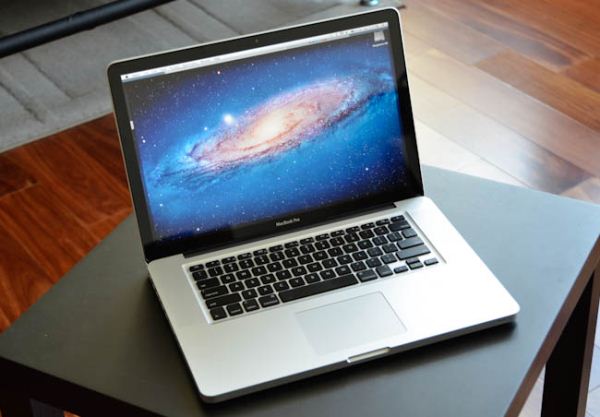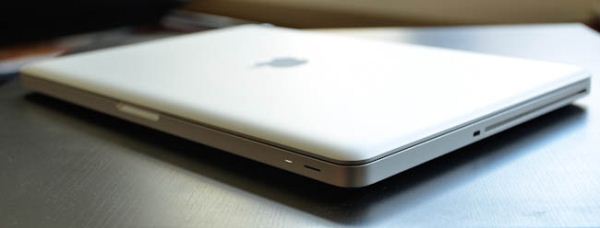The 2012 MacBook Pro Review
by Vivek Gowri on July 18, 2012 2:00 PM EST- Posted in
- Mac
- Apple
- MacBook Pro
- Laptops
- Notebooks
With most of the attention from Apple's hardware refresh event centered around iOS 6 and the new Retina MacBook Pro, the updated 2012 edition of the regular MacBook Pro has flown a little bit under the radar. Basically, it’s just an Ivy Bridge-infused version of the venerable unibody MacBook Pro chassis that we’ve known and loved for the last few years. The details don’t bring any particularly earth-shattering revelations, with 13” retaining the dual-core processor and integrated graphics, while the 15” makes the switch from AMD to Nvidia’s new Kepler-based GT 650M dedicated graphics. Along with Ivy Bridge, the 2012 MBP line gets HD 4000 graphics and USB 3.0 across the board, plus a free update to Mountain Lion when it releases later this summer. Naturally, it doesn’t generate the same kind of excitement that the all-new, all-awesome Retina MacBook Pro does. But is a less headline-worthy computer necessarily a worse one?
It’s pretty difficult to find things to write about the 2012 MacBook Pro hardware. You can essentially sum it up in one paragraph, or even one sentence if you try hard enough. The 2012 MBP looks exactly like the 2011 MBP, which looked exactly like the 2010 MBP, which looked exactly like the post-April 2009 MBP. It’s likely to be the last iteration of the original unibody MBP, giving this body style a 4.5 year run as one of the most instantly recognizable notebook computers on the market. I’m not going to go too far in depth with analyzing the design, because we’ve gone over it a few times over the years (here, here, here, here, here, and here. Oh and here too, just for good measure.)
It’s a solid notebook, that much is certain. From an SKU standpoint, Apple has kept things relatively straightforward, with a high end and a low end for both the 13” and 15” models. Starting at $1199, the MBP13 comes with a 2.5GHz Core i5-3210M, 4GB DDR3, and a 500GB HDD, while the higher end SKU bumps that to a 2.9GHz i5-3520M, 8GB DDR3, a 750GB HDD, and a $1499 pricetag. Other than the updated processor/integrated graphics and the addition of USB 3.0, the 13” is identical to the previous model that we covered in depth last year.
The 15” is a bit more interesting. The base $1799 SKU comes with a quad-core i7-3615QM (2.3GHz) and a 512MB Nvidia GeForce GT 650M dGPU, but makes do with a paltry 4GB of memory and a 500GB hard drive. The standard memory and storage configuration in a nearly-$2000 notebook is pretty unacceptable. This being Apple, upgrade pricing is still a hair away from being highway robbery, but at least the matte WSXGA+ screen upgrade costs a reasonable $100. Thankfully, unlike the rMBP and MacBook Air, you can always opt to buy RAM and storage upgrades on your own.
| 2012 MacBook Pro Lineup Comparison | |||||
| 15-inch Mid 2012 MacBook Pro | MacBook Pro with Retina Display | ||||
| Dimensions | 0.95 H x 14.35 W x 9.82" D | 0.71 H x 14.13 W x 9.73" D | |||
| Weight | 5.6 lbs (2.54 kg) | 4.46 lbs (2.02 kg) | |||
| CPU | Core i7-3615QM | Core i7-3720QM | Core i7-3615QM | ||
| L3 Cache | 6MB | 6MB | 6MB | ||
| Base CPU Clock | 2.3GHz | 2.6GHz | 2.3GHz | ||
| Max CPU Turbo | 3.3GHz | 3.6GHz | 3.3GHz | ||
| GPU | Intel HD 4000 + NVIDIA GeForce GT 650M | ||||
| GPU Memory | 512MB GDDR5 | 1GB GDDR5 | |||
| System Memory | 4GB DDR3-1600 | 8GB DDR3-1600 | 8GB DDR3L-1600 | ||
| Primary Storage | 500GB 5400RPM HDD | 750GB 5400RPM HDD | 256GB SSD | ||
| Optical Drive | Y | Y | N | ||
| Display Size | 15.4-inches | ||||
| Display Resolution | 1440 x 900 | 2880 x 1800 | |||
| Thunderbolt Ports | 1 | 2 | |||
| USB Ports | 2 x USB 3.0 | ||||
| Other Ports | 1 x Firewire 800, 1 x Audio Line in, 1 x Audio Line out, SDXC reader, Kensington Lock slot | SDXC reader, HDMI out, headphone out | |||
| Battery Capacity | 77.5 Wh | 95 Wh | |||
| Price | $1799 | $2199 | $2199 | ||
The unit we’re looking at here is the high-end 15” SKU, with a 2.6GHz i7-3720QM and a 1GB version of the GT 650M, plus 8GB memory and a 750GB HDD. It rings up at $2199, which interestingly is the same as the base rMBP (i7-3615QM/8GB/256GB SSD/1GB GT 650M). I’m mostly certain that it’s not the configuration to get - you’re better served by getting a base 2.3GHz 15”, adding the $100 high-res screen, and grabbing a 256GB SSD (~$250) and an 8GB RAM upgrade (~$50) separately from Newegg or Amazon. Boom. You spend roughly the same $400, depending on your SSD choice (I would go Samsung SSD 830), and end up with a system with a better screen that’s faster in most day to day situations. Unless you have a really specific need for the extra 512MB vRAM or 300MHz clock speed increase, I’d recommend against it.












132 Comments
View All Comments
tipoo - Thursday, July 19, 2012 - link
Maybe saving the quad for the Retina 13"?Death666Angel - Friday, July 20, 2012 - link
TDP is the same, maybe actual power consumption and thermal development not? :-) Or they are saving it for the rumoured 13" rMBP. *spooky sound*SantaAna12 - Wednesday, July 18, 2012 - link
Macbooks only compared to other Apples.......comon. Every once in awhile you guys do this.....shades of Toms antics. YOU ARE BETTER THEN THIS!juanml82 - Wednesday, July 18, 2012 - link
People who have invested in Firewire external drives will need the firewire port. I see practical reasons for that port to remain, while there are no practical reasons to remove it other than FW800 not being new and flashy anymore.I just don't see the value in breaking backwards compatibility unless it adds to much to the final cost.
inplainview - Thursday, July 19, 2012 - link
People who invested in FW drives can use Firewire over Thunderbolt when the adapter drops. Did you really miss that part?Freakie - Thursday, July 19, 2012 - link
Those who invested in firewire so heavily are usually Mac users and already have had a limited selection of devices to chose from compared to those rooted in USB which means there aren't many of them. Most people who are able to see an unpopular connection when it comes around were able to stay with USB/Ethernet and it's payed off just fine. If you want to make sure you aren't going to break backwards compatibility in the future again, then stick with USB 3.0. Thunderbolt wont gain all that much momentum, and the number of USB 3.0 ports on the rMBP shows that even Apple knows that it's not going far (not to mention they didn't exactly have much work to do since Intel made it possible for them... typically Apple laziness)But seriously, it's either just bad luck (being a Mac user and not having a wide range of devices to chose from, and so your professional devices often used firewire) or lack of forsight that got you (or anyone else) in that position. Now that you have two choices for high speed interface, it should be easy to avoid it happening again.
pmhparis - Thursday, July 19, 2012 - link
The subject of this article is the non-retina MBP.Where do you see that the FW port has been removed from the non-retina MBP?
Death666Angel - Friday, July 20, 2012 - link
Anand did talk quite a bit about how he would like those connection (ethernet, FW) to be done with in the next MBP redesign. And he praised the rMBP for doing just that. So the reader is just expressing his opinion vs Anand's.However, considering that there will be both ethernet and firewire adapters for thunderbolt, I see no reason to complain.
Bonzauker - Wednesday, July 18, 2012 - link
Does anyone have an idea why the external display still requires the discreet card? It's the main reason for noisy operations but, as far as I know, Intel 4000 should be able to handle it.Death666Angel - Friday, July 20, 2012 - link
Maybe some channel muxing issues/how the external port is connected to the CPU/GPU.